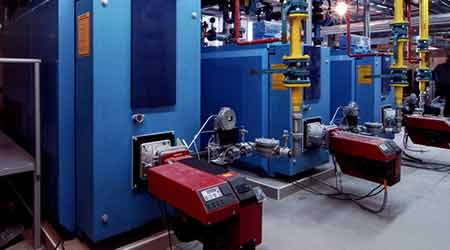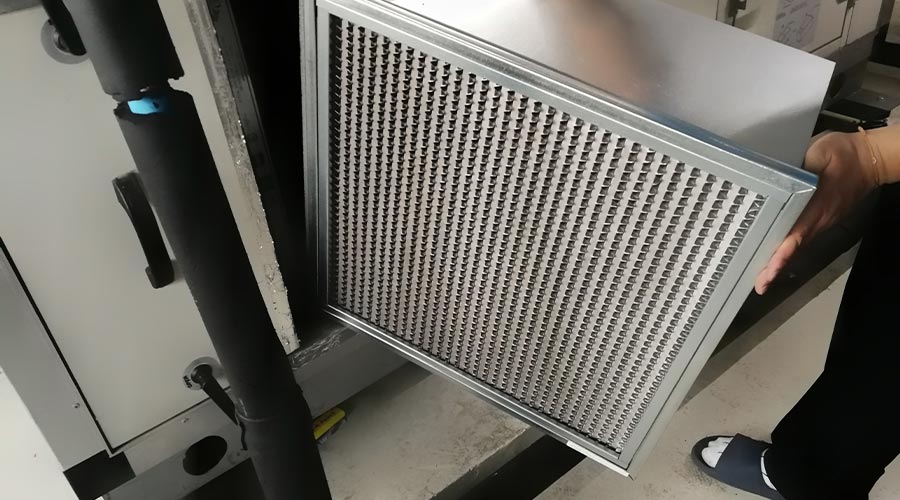New Thinking In Boiler Design Leads to Better, More Efficient Systems
Spurred by advances in building automation system technology, decentralized systems can offer several advantages for FMs,
New projects can take advantage of formerly out of the box thinking. Outdated ideas have many designers still thinking like Naval ship architects: providing one or two very large boilers in a central boiler room needing 24/7 attendance, large distribution piping carrying hot water from a single location to the building perimeter and back, and large pumps and other hydronic specialties (all custom order).
This was the best approach when coal or oil had to be bunkered nearby and boilers were custom-built and hand-fired, but it often makes far more sense today to decentralize. Modern embedded controls, safety devices, and improved burner technology provide the tools for manufacturers to build very reliable, compact, low pressure boilers that need little or no direct supervision by an operator and very little heavy maintenance.
Natural gas condensing boilers are easily installed in small spaces, supplied with combustion air and vented via smaller diameter, zero clearance, category IV direct vent systems. The energy source can be piped to a number of smaller boilers in remote location mechanical rooms (even closets), so that heating water distribution distances and pipe sizes are reduced, saving on pumping energy. Components often shrink to off-the-shelf sizes, further reducing installed costs and making maintenance easier. Buildings can often be split up to operate as separate zoned heating systems (sunny side vs. shady side of the building, for instance), and controlled by building management systems. Advances in BMS control technology have been a key factor in making this type of de-centralization more practical, giving operators the ability to monitor and adjust all of this equipment from a central location.
This approach is not for everyone, and careful coordination between building owners, tenants, architects and mechanical engineers is needed to ensure the success of de-centralized systems. All parties have to be willing to engage in the planning and design process because there are potential downsides. Mechanical rooms have to be accessible 24/7 for maintenance and well-insulated to prevent transmission of noise into occupied spaces. The number of building envelope penetrations will increase, although they will be individually smaller.
Fuel considerations
From an operating cost perspective, as long as natural gas prices in North America remain at current pricing and you have availability at your building site, the choice is obvious. When carbon emissions are factored in, natural gas is the greenest of the fossil fuels, producing a little more than 50 percent of the carbon dioxide of coal and approximately 75 percent of fuel oil per unit of energy produced.
However, the de-regulation of the energy industry, and the effects of climate change on public policy, have complicated the choosing of an energy source for new buildings. Fundamental changes are occurring in the energy landscape and the future is blurry. What effect will battery-powered vehicles have on electricity costs? How will peak load billing practices impact building mechanical design?
Consideration should be made as to the possible need to change to a different energy source should natural gas fall out of favor in the future. The formulas for first cost of equipment versus projected operating costs over time are becoming more uncertain. Facility managers should consider energy efficiency and energy management consultants to help cut through the fog.
The versatility of low temp
Designing a system to utilize lower water temperatures is relatively easy. Radiator, convector, and air handler coils require more surface area, and many manufacturers have re-designed their products to work at lower temperatures without a substantial increase in physical size. Radiant floor heating is an ideal method of heating large spaces with low temperature water, and at least one big box retail giant is currently assessing some of the new facilities they’ve constructed using radiant floor heating systems, which are perfect for utilizing waste heat from in-store refrigeration equipment.
Designing heat distribution systems in new buildings to take advantage of reduced water temperatures has an additional benefit, in that building owners will be able to easily change their heat-generating equipment with very little disruption to their delivery system should fossil fuel prices increase substantially or onerous carbon taxes make their way into the equation. Very promising newer technologies include air-to-water and ground-source heat pumps that also reach higher efficiencies with lower delivery temperatures. If peak load billing makes heating with electric heat pumps less desirable, perhaps the addition of a microturbine combined heat and power unit might reduce a building’s peak load back under the tipping point. Solar thermal is a well-developed method of harvesting renewable energy that marries well with low temperature thermal storage methods and low temperature hydronic heating systems as well.
Condensing boilers are a perfect match for many types of hybrid systems that might use new tech solutions like solar thermal, air-to-water heat pumps, biogas, waste heat recovery, and combined heat and power generation. These green technologies can appeal to many building owners for marketing reasons, but without incentive programs payback time is lengthy. Straight cost analysis may not be valid, however, because many companies today see “going green” as a reason to make changes in and of itself — the right thing to do. First cost may be secondary to the public relations benefits accrued to their brand, as often the costs of going green can be leveraged into increased profits going directly back to the bottom line.
Roy Collver has more than 40 years experience in the HVAC industry. He specializes in hydronics, with a tight focus on boiler technology, controls, and gas combustion. In addition to writing and training about HVAC-related subjects, he works in construction administration for mechanical engineering firms.
Email questions to edward.sullivan@tradepress.com.
Related Topics:














